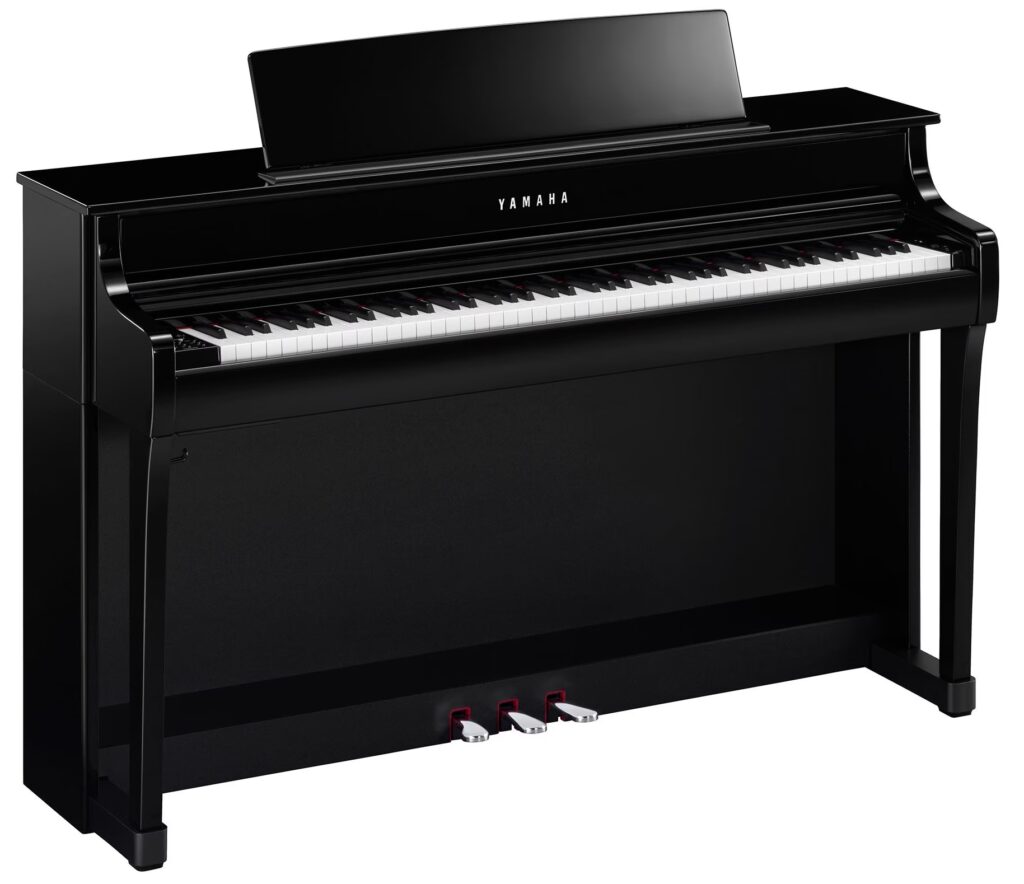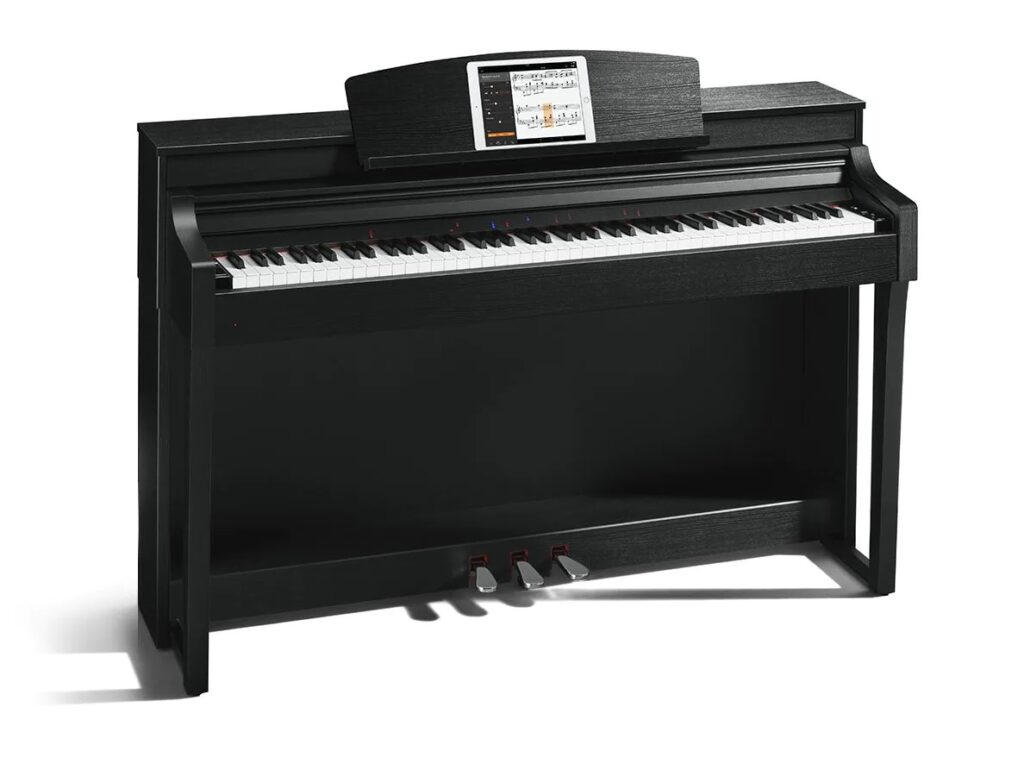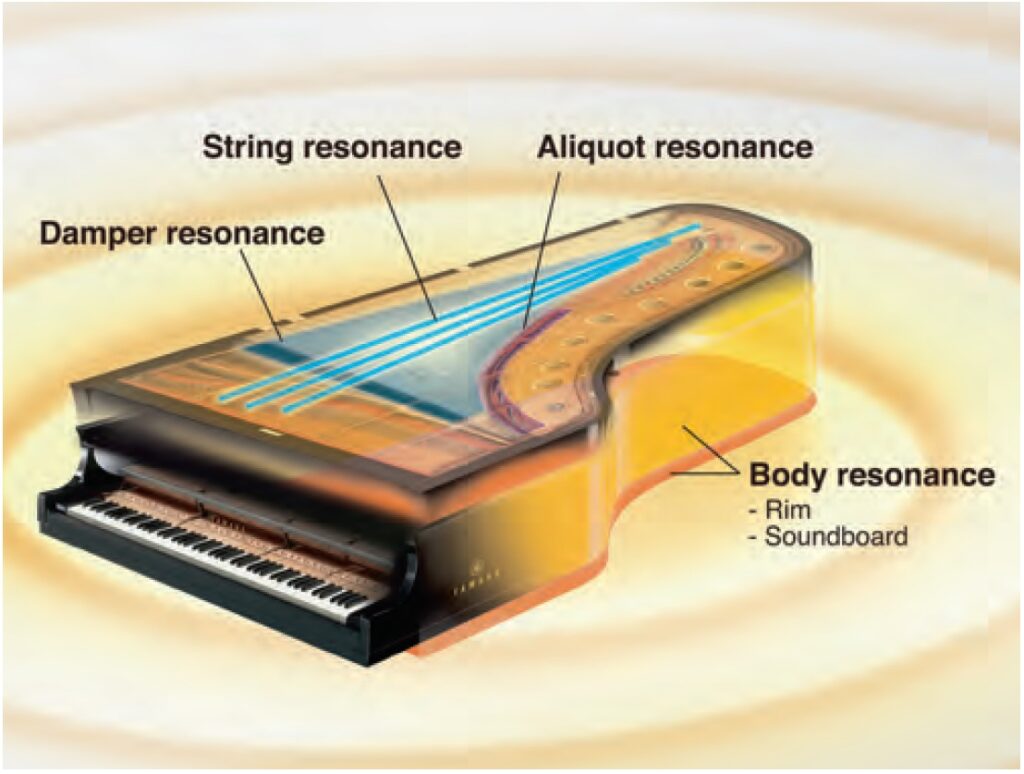Yamaha have announced the much-anticipated CLP-800 series Clavinova digital pianos.
Personally, I was hoping for a significant bump over the CLP-785, the main reference point for this post. The CLP-785 — and now the CLP-885 — are the flagship “spinet” models. Although I enjoy my CSP-170, my dealer offers an attractive trade-in, trade-up plan which I would exercise given the right motivation. After a quick glance through the Owner’s Manual and Data List, my ardor cooled, sad to say.
The user interface (i.e., front panel and key functions) and choice of keybed (e.g., GrandTouch and GrandTouch-S) remain largely the same. The piano engine features the same capabilities as the CLP-700 series:
- Grand Expression Modeling
- Key-off samples
- Smooth Release
- Virtual Resonance Modeling (VRM)
- Polyphony 256 (maximum)
Secondary voices and the XG (GS, GM2) sound set remain the same. Please see the CLP-800 series comparison table as lower-end models may elide specific features and voices.
The CFX Grand and Bösendorfer are the featured pianos, and include Binaural Sampling. The CLP-800 series adds two new acoustic piano voices: Chill Out Piano and Lo-Fi Piano. The same Fortepianos are offered: Scarlatti, Mozart, Beethoven, and Chopin Pianos. All other secondary voices are the same in the CLP-800 series. No big upgrades.
The classical and lesson song lists and rhythm list are the same.
The CLP-800 series Owner’s Manual has many revisions for readability. The different organization makes it difficult to make an exact features by feature comparison between the series. I haven’t spotted any gotta-have new features.
Yamaha have made significant changes in the built-in sound system(s):
Component CLP-885 CLP-785
------------- ------------------------ ------------------------
Amplifiers (45 W + 30 W + 40 W) × 2 (50 W + 50 W + 50 W) × 2
Speakers (16 cm with diffuser + (16 cm +
8 cm with diffuser + 8 cm +
2.5 cm (dome) with 2.5 cm (dome) +
Bidirectional Horn) × 2, transducer) × 2,
Spruce Cone Speaker Spruce Cone Speaker
You will find similar changes in spec for other models, should you look at the CLP-800 series comparison chart.
Yamaha have given the DSP effect types a modest boost by adding “Effect types used for a specific Voice”. These effect types are:
VCM EQ 501 Virtual Circuit Modeling (VCM) vintage EQ
Comp Distortion Compressor stage followed by distortion
Vintage Phaser Stereo VCM analog vintage phaser
Stereo Overdrive Stereo overdrive distortion
Damper Resonance Simulates grand piano damper resonance
Hall 5 REV-X hall reverb
Yamaha arranger and synth enthusiasts will recognize these effect types. They are DSP algorithms that are typically applied to electric piano and other keyboard voices.
Initial Reaction
My initial reaction is “Big-whoop”. [“Disappointment” for those of you who are not familiar with American sarcasm.]
The big functional change appears to be the use of “diffusers” in the built-in sound system. The CLP-800 Web page has a big chart comparing sound system components. The chart made me feel like I was buying a PA system, not a piano. Yamaha need to find a different way to promote this technology — something to make the technology approachable and cuddly to the average customer. Way too techie!
Frankly, I’m left cold. Since I’m happy with my CSP-170, I cannot find a compelling reason to upgrade to the CLP-800 product line (or the CLP-885, in particular). Guess that trade-up option is going to go unexercised…
Why the underwhelming Clavinova Series 800 update?
We know — from Yamaha’s quarterly call with analysts and investors — that the bottom has fallen out of the world-wide market for home digital pianos. China, in particular, is slow. Possibly, Yamaha did not feel the need or want to drive the home digital piano market too hard at this point in time. Perhaps they are saving bigger updates for the future when the market is more favorable?
This doesn’t mean that the CLP-800 series are bad pianos. I liked the Yamaha CLP-785 very much. As far as I’m concerned, personally, CLP-885 doesn’t give me a compelling reason to upgrade.
Technical footnote
The CLP-700 and CLP-800 series generate high resolution velocity and acceleration data with each MIDI note ON message. Two MIDI continuous controller (CC) messages are generated:
CC#19 Key acceleration
CC#88 High-resolution velocity prefix
By “prefix”, I suspect Yamaha mean the high order byte of an extended velocity data value. If you intend to use a “Grand Expression” digital piano with a personal computer-based software instrument (e.g., Modartt Pianoteq, Arturia Piano V, etc.), you will need to filter out or map these “extra” MIDI messages. Check the MIDI Implementation Chart for your model and software instrument (VST).
Copyright © 2024 Paul J. Drongowski




